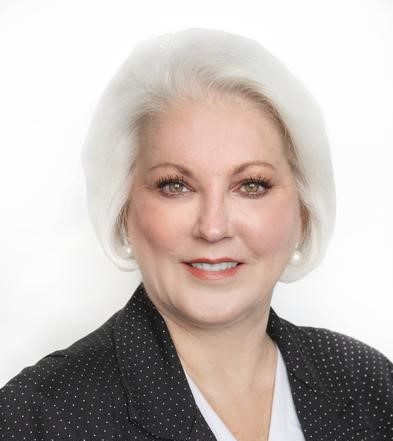Whether an owner is transitioning a practice to an associate, colleague or corporate entity, the process of onboarding can be complex. This article intends to outline the medical, financial and staff transition steps to follow, post-sale, along with the challenges each presents.
Challenges Faced
Although mergers and acquisitions (M&As) typically begin with high hopes of success, not all do succeed. Below are some statistics about practice sale shortcomings:
- 65% of all M&As do not achieve objectives set forth by deal architects
- 83% of mergers do not increase shareholder value
- 50% loss of key managers and technical employees is experienced within 12 months
- 50% of failures are due to cultural clashes
Most failures are attributed to operational, financial and/or customer relations problems. Within these broad categories, common reasons for M&As failing to achieve their objectives include the parties not doing one or more of the following:
- thoroughly consider all types of value critical to the practice
- establish priorities for integration
- identify and address risks that inhibit integration
The buyer may, for example, expect the seller’s personnel to integrate themselves, which may not happen. In other scenarios, the buyer has an integration program, but it does not run efficiently or see things to fruition. No matter the specifics, the ultimate result of poor integration is that morale drops, revenue diminishes, and objectives are not met.
In a full half of M&As, key managers and technical employees leave. This is typically an indication that a new owner has failed to implement an organizational and leadership structure that is emotionally satisfactory to employees, at least not in a timely manner. As a result, talented staff leave for better-run practices.
For a successful transition to occur, timing is key. A prolonged transition period distracts leadership from the mothership of the business. Gaps in communication contribute to a drop in customer service, which is reflected in reduced client retention—effectively leaving the practice vulnerable to veterinary competitors in the area.
Medical Transition
There are three main areas to consider in regards to the medical side of the transition.
Medical Records
As part of a transition, medical records must be carefully reviewed to ensure they contain all information and documentation as required by state and federal law. Generally, the physical medical record is owned by the veterinarian or entity responsible for compiling and maintaining the medical record. To ensure no lapses occur in accessing or adding to existing medical records, the owner and buyer should clearly define how such files are to be transferred and managed.
Medical Operations
It’s important for the buyer to have access to job descriptions of all the seller’s staff, along with the practice’s standard operating procedures. Often, sellers may propose changes to increase synergy and efficiency. For example, sellers may overhaul product or service offerings to enhance compatibility with the existing clientele or attract new ones. The operational documents created, however, should outline job descriptions and standard operating procedures—and the infrastructure required to execute them—as they currently stand.
Maintaining Medical Standards
Upholding the medical standards of a practice is intricately entwined with retaining key staff members who execute those medical processes. If the practice associates and staff intend to continue working post-sale, employment agreements should be created that include staff roles, responsibilities, and terms of agreement. The owner can suggest that the buyer wait six months to implement any significant changes, and then to do so gradually.
Financial Transition
The first steps in planning a financial transition include to generate an expense budget, profit and loss statement, and statement of assets and liabilities. The author recommends creating an expense budget based on the latest edition of Veterinary Economics’ Benchmarks: A Study of Well-Managed Practices. A typical expense budget includes (at minimum) projected and actual values of revenue, cost of goods sold, staff, rent, equipment leases, utilities, office supplies, bank fees, and owner salary.
A profit and loss statement features year-to-date comparisons of items such as fees for professional services, laboratory services, vaccinations, pharmaceutical imaging, grooming, and dental services, as well as food and retail sales. Additionally, it lists year-to-date data on costs of goods sold, along with staff, equipment, and administrative expenses. Finally, it calculates a net income. On average, this statement should take about five to ten hours per month to generate.
A statement of assets and liabilities functions as a balance sheet for the practice. It lists both current and non-current assets; the latter is not easily converted into cash and can include buildings, equipment and motor vehicles. Current assets include money in checking or savings accounts, accounts receivable, and inventory, among other possibilities. An example of a non-current (long-term) liability is a loan taken out to buy the practice; current liabilities include accounts payable and other amounts expected to be paid in the current financial year.
In generating financial analyses of the practice, it may be important to hire an accountant. In general, accountants cost about 0.5% of gross annual revenue. Moreover, owners should consider hiring a dedicated practice manager, which will cost about 0.4% of gross annual revenue.
As a tool to help owners further interrogate data, practice management software allows owners to track gross revenue in multiple ways, perhaps weekly, monthly, and quarterly. Average transaction charges should be tracked hourly; if not, then daily, and then periodically.
Staff Transition
Cultural clashes are defined here as differences in human elements between merging companies. For a practice to be successful, these clashes must be identified through an audit and then successfully addressed. A cultural audit would examine factors such as core values, policies and practices, work processes, leadership styles, and human emotions. More specifically, examinations in human emotions should include people’s uncertainties surrounding job security and their fear of change. The importance of an audit of staff emotions cannot be understated, as one survey suggests a 26% increase in successful mergers if human elements are resolved in pre-deal stages.
The buyer must determine the health of the seller’s practice’s human capital. Metrics helpful in determining this include rates of employee retention and/or turnover, the effectiveness of internal channels of communications, and past lawsuits, among others. Specific issues that need to be addressed with staff include any changes in benefits, pensions, compensation packages and reward and recognition programs.
To successfully transition the staff to new ownership, it’s important to plan the integration 60 to 90 days ahead of the target closing date. The buyer must define, in writing, the mission, values, leadership style, and philosophy of the new company. Additional tasks include to:
- identify potential barriers to integration
- craft strategies and solutions to overcome barriers
- prioritize work-streams, especially those that are synergistic
- assign leaders to monitor specific progress parameters
- outline predictable reward and recognition programs for employees that are driven by performance
- solicit employee input so that job descriptions are clear (this is crucial for them and the practice overall to meet expectations)
- create process maps and tools to facilitate career development
- groom potential replacements
- invest in high-potential employees year-round
- retain key employees using personal, one-on-one communication
- clearly point out channels of communication and feedback mechanisms to address employee concerns in real time
- host integration activities between the merging staffs.
If this seems overwhelming, given all the work that needs done, consider hiring a third-party professional cultural auditor. Senior executives are often too involved in the practice vision to fully assess workplace culture. Furthermore, employees may be more forthcoming with sharing their problems to an impartial outsider. Such auditors can offer different perspectives without regard for their own job security, resulting in a more objective cultural examination.
Five Things Not to Say
- “We don’t anticipate making any changes.” On the contrary, changes are to be expected, post-sale; it should be viewed as an opportunity to make improvements. Besides, when changes do occur, they will be attributed to the transition whether they are related or not.
- “This is a merger of equals.” Pre- and post-sale teams are never truly equal in authority.
- “We plan to take the best of both worlds.” This phrase is, at best, subject to the opinions of the pre- and post-sale teams.
- “It will continue to be business as usual.” Practice sales often fundamentally change the psychological tone of a clinic as it transitions to new ownership.
- “The culture of our two companies is very similar.” Although this may be true, people will focus on differences, which will bring unwanted attention to areas where expectations were not met.
Although positive outcomes cannot be guaranteed, owners can take definitive actions to help their team transition operationally, financially, and culturally. Through careful preparation and clear communication, many problems in transitioning a practice to new ownership can be prevented or at least significantly minimized.









